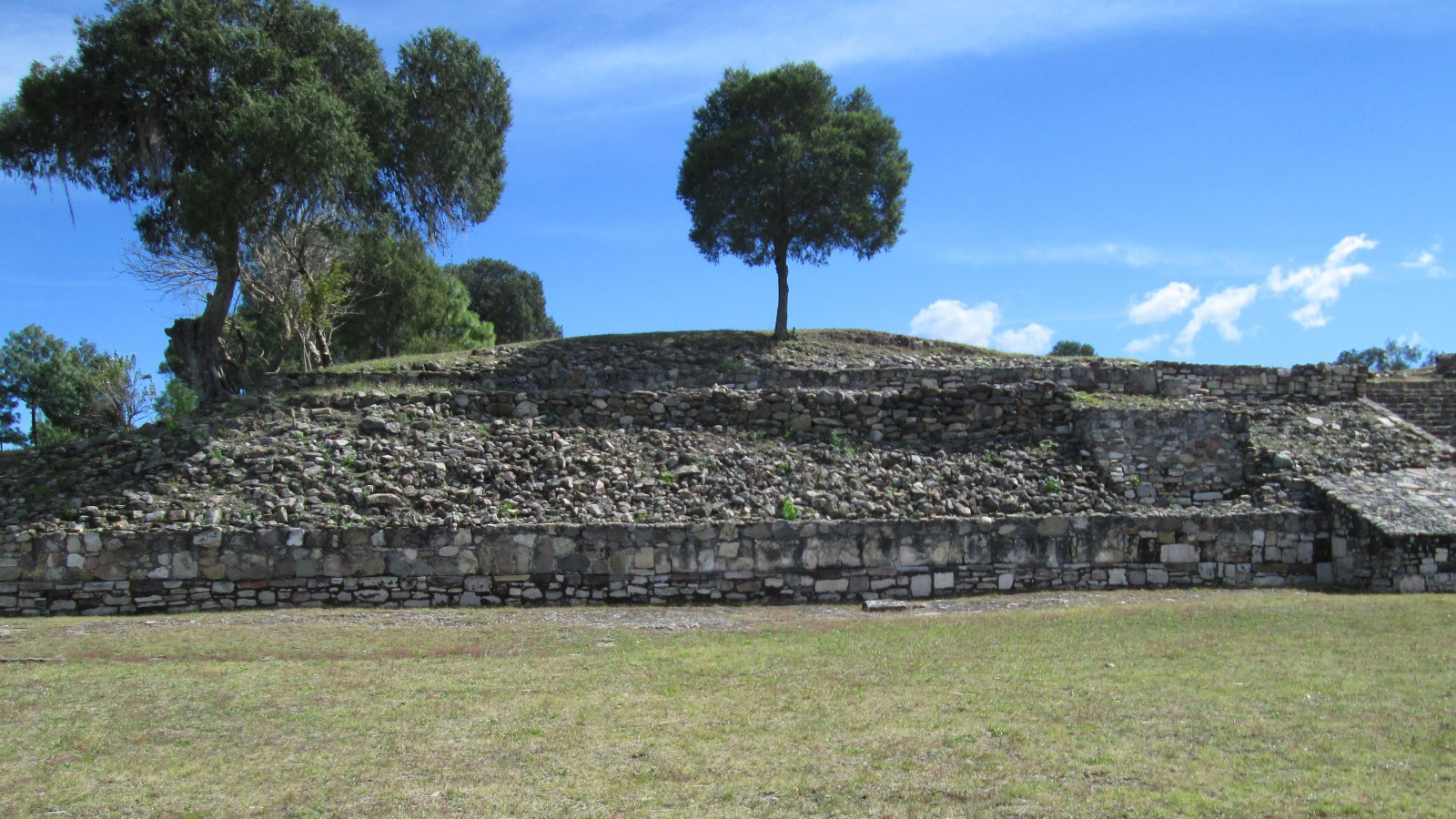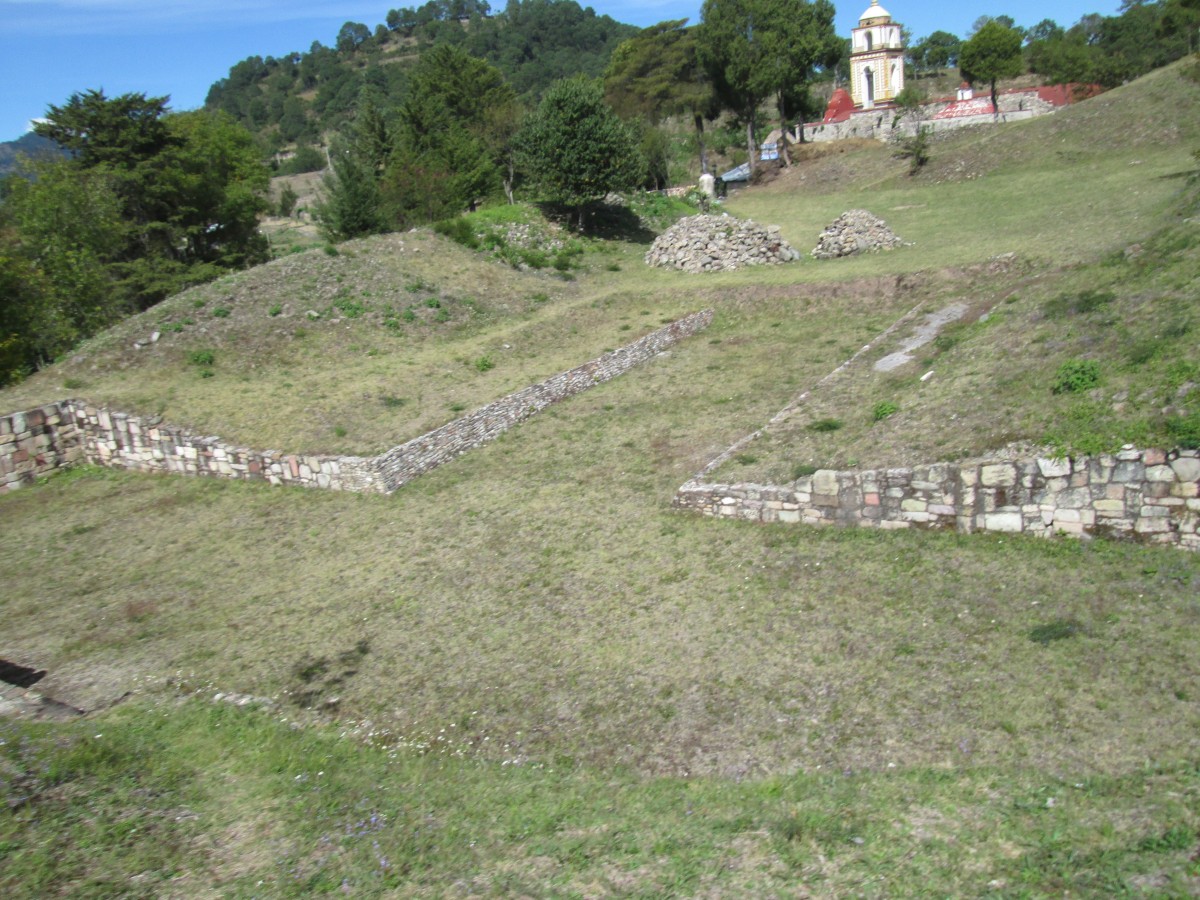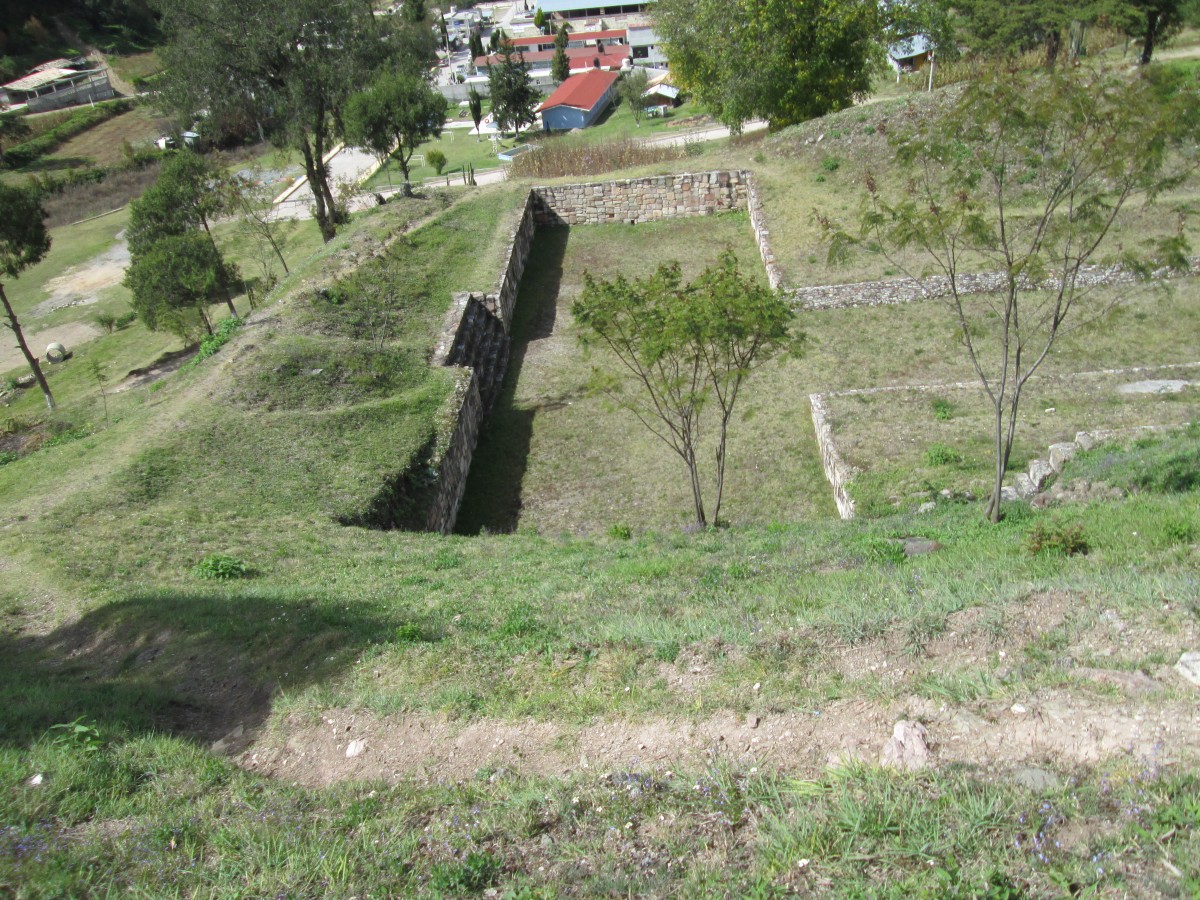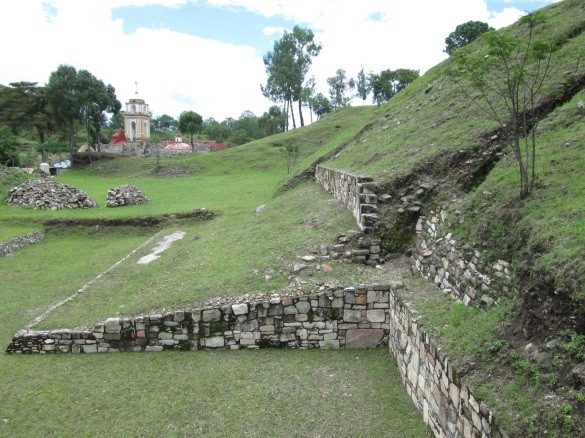Huamelulpan
The hill that flew
One of the main urban centers of the Mixtec culture, outstanding for its monumental architecture and sculpture, carvings with calendar signs and a ballcourt related to a ritual which often culminated in human sacrifice.
About the site
Huamelulpan is notable for its monumental architecture and sculpture, as well as for its calendar inscriptions. It had three periods of occupation: Huamelulpan I from 400 to 100 BC; Huamelulpan II from 100 BC to 200 AD, a period that saw rapid population growth; and Huamelulpan III from 200 to 600 AD, a time of shrinking population, though new buildings were erected nevertheless. The city was built on a hilly area with terraces on the hillsides. It was organized into complexes of monumental architecture separated into three principal and two minor centers. These five centers are: the Cerro Volado Group, the Cemetery Group, the Old Church Group, the West of the Church and the Church Group. Since the many hills and ridges are the principal features of the environment, the array of constructions were adapted to this type of terrain, with a system of terraces for simple houses with stone foundations where the ordinary people lived, while the public and ceremonial areas were distinguished by their large stone platforms laid out in steps bordering open spaces. A ballcourt structure was found in the lower part, relating to a ritual that often culminated in human sacrifice. Enormous platforms were found in the southern part of the West of the Church Group, whose corners were reinforced with blocks of rectangular stone weighing several tons and bearing calendar signs very similar to the Zapotec writing system seen in Monte Alban.
Practical information
Temporarily closed
Tuesday to Sunday from 09:00 to 17:00 hrs.
La zona arqueológica no se encuentra abierta oficialmente al público y no cuenta con ningún tipo de servicios para atención a la visita turística. Dada la cercanía a la población, en esta última se puede tener acceso a sanitarios públicos.
Se localiza al oeste de la ciudad de Oaxaca en el municipio de Tlaxaco.
From the city of Oaxaca take the road to Tlaxiaco-Teposcolula, and at kilometer 36 take the turn off towards the town of San Martín Huamelulpan.
Services
-
+52 (951) 515 3346
Directory
Departamento de Protección y Resguardo de Bienes Culturales del Centro INAH Oaxaca
Manuel Rufino Aguilar Martínez
This email address is being protected from spambots. You need JavaScript enabled to view it.
+52 (951) 513 3346, exts. 288000 y 288001













